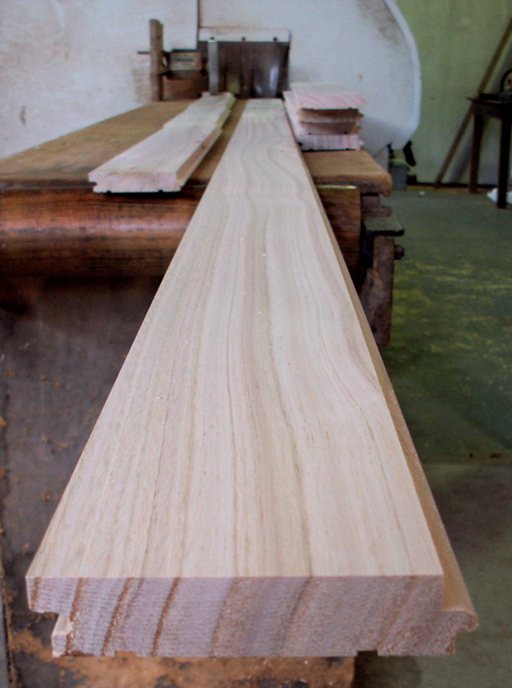Processing
 "Processing" is essentially machining timber into profiles for the end-use. This is usually done on one piece of machinery called a "four sider" which dresses both faces and both edges in one pass.
"Processing" is essentially machining timber into profiles for the end-use. This is usually done on one piece of machinery called a "four sider" which dresses both faces and both edges in one pass.
The moisture content of the wood is important and should be tested prior to processing. Timber must be dry enough for the application, usually kiln-dried. Flooring timber should be at 10-12% moisture before profiling, while structural timber may be at 16-20% moisture content. Enough pieces of timber are tested to give confidence that the range of moisture contents are within acceptable limits.
For a quality result, timber is usually machined by skilled craftspeople using quality machinery and sharp cutters. Timber is often blanked before the final pass through the machine to final profile. The blanking process square dresses the timber (usually on four sides) so that less material is removed on the final pass. This produces a better finish with less chip out.
Small runs of any one profile usually involve a set-up cost. The processor will supply rates for profiling your timber, usually on a lineal metre rate.
Processing may expose defect which was not apparent on the sawn product. This is why docking is often undertaken after processing. However, the tradeoff is a higher cost if processing is on a lineal metre rate.
Disclaimer: While every effort is made to ensure the accuracy of the information provided on this site, Farm Forestry Timbers Society do not accept liability for any consequences arising from reliance on the information published. If readers have any doubts about acting on any articles they should seek confirming, professional advice.
 Farm Forestry New Zealand
Farm Forestry New Zealand Farm Forestry Timbers - Headlines
Farm Forestry Timbers - Headlines